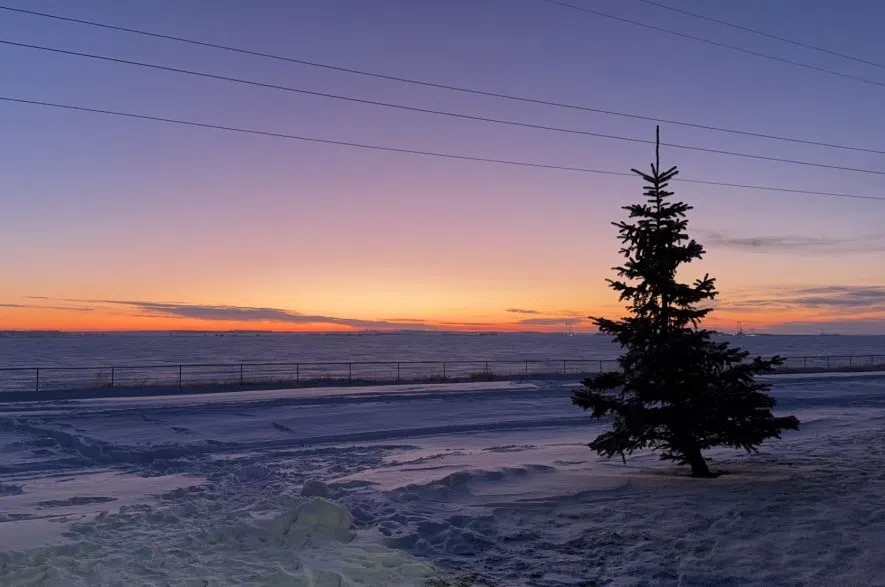The Old Farmer’s Almanac has been a household name for over two centuries, famous for its long-range weather predictions, gardening tips, folklore and wisdom.
The first edition was published in 1792, giving it the title of North America’s oldest continuously published periodical, and it’s still going strong today.
Read more:
- Milder, wetter winter ahead, predicts Old Farmer’s Almanac
- Saskatchewan ranks first in housing starts, second for GDP growth: Report
- Carney to attend United Nations General Assembly at pivotal time for the institution
While its accuracy has been debated, the Almanac remains a trusted and nostalgic resource for many.
Tim Goodwin, Senior Editor of The Old Farmer’s Almanac, recently joined The Evan Bray Show to discuss the publication, how it creates its predictions and why it continues to capture the public’s attention in a digital age.
Listen to the full interview with Tim Goodwin here:
The following questions and answers have been edited for length and clarity.
EVAN BRAY: The Old Farmer’s Almanac goes back to 1792. Can we talk a little bit about the history of it and where the concept for this came from?
TIM GOODWIN: It’s the oldest continuously published periodical in North America, 234 straight years. It’s astonishing to think of the history and the people who have worked for The Old Farmer’s Almanac, well before I was even a thought.
At that time, people didn’t go very far. People didn’t travel. So, all these little pockets, towns and counties had their own almanacs. There were way more options back then; even Benjamin Franklin had his own almanac. It was one of those things that people used to grow their crops, to learn about the cost of postage and everything. You look back at some of those really old editions, and it’s pretty interesting to see what they would print.
Robert B. Thomas, at that point, was another person who wanted to start an almanac. He was an educator and an amateur astronomer. He was very interested in the weather. There were 3,000 copies printed for his first edition and 9,000 the following year. Now we distribute 2.5 million copies every year.
It didn’t start as the Old Farmer’s Almanac. That was added in 1832; it was dropped at one point, but then it’s always been there since 1848. The four seasons yellow cover, the drawing that you see on there was added in 1851. The history, just looking at the almanac, that yellow cover and what it represents, is just so nostalgic to so many people.

Tim Goodwin is the senior editor of the Old Farmer’s Almanac. He joined the team as associate editor in October 2021. (Old Farmer’s Almanac website)
I was joking about how many people have read that book while sitting on the toilet. In all seriousness, it’s very popular reading material that you could find almost anywhere in people’s homes, including the bathroom.
GOODWIN: Look at the hole in the upper left corner, the reason that hole was put there was because it was hung in out houses, or people would tie it to a string on their belt loop and bring it out into the fields with them or into their gardens, to be able to check the information that was in there.
It was such a piece of your day-to-day life, and what you used it for was much different than what it is today. Now, we still have a lot of that great information, like those calendar pages with the sunrise and the moon sets and the tides and all that information. Now it’s got that little bit more of an entertainment value to it.
When you think about this publication, which has stood the test of time, first published in 1792, how do you strike the balance between preserving its historical traditions and roots while adapting to more modern audiences and technologies?
GOODWIN: I think what makes this almanac so special and so beloved by so many people is that we have kept that tie to history. We have kept the mission of what Robert B. Thomas started.
We’re constantly thinking about how can we appeal to the most people? We’ve got to stay within those roots of farming, gardening, astronomy, food, history, home remedies and folklore. Those are things that have been around in the almanac for so long, and they’re things that people look forward to reading.
Do you have a sense of the accuracy that the almanac has had over the years when it comes to weather?
GOODWIN: Year over year, you know, we’re about 80 per cent. We’re looking at averages over 30 years. When Environment Canada puts out their new collection of data, which actually was just finalized at the end of last year, from 1991 to 2020, we’re looking at a lot of that data, and making our forecasts based on those normals.
But how do you do it? In layman’s terms, what are your forecasting methods? Can you share anything that helps you maintain your credibility and your accuracy?
GOODWIN: There are some things in a black box in our office that we can’t share. Those are things that go back to the beginning of the Old Farmer’s Almanac. But when Robert B. Thomas started the almanac, he was an amateur astronomer. He had this intrigue with the weather. He believes that the weather here on Earth was influenced by sunspots, these magnetic storms on the surface of the sun. And solar science is still a part of the disciplines that we use.
We’re really looking at weather trends and events and comparing those solar patterns with historical weather conditions. Our temperature predictions are based on deviations from averages or normals. There are some more secrets in the box; we can’t go too far into those.
What is the Farmer’s Almanac calling for in terms of Western Canada, maybe specifically the prairies, through the next few seasons?
GOODWIN: Our fall forecast would be September and October and we’re looking for it to be a little bit on the warmer side and wetter than normal.
When we’re looking at winter, we’re looking at above-normal temperatures, not to say there won’t be some cold times. Late November and early December will be the time for those coldest periods. And again, coming back in early February.
As for precipitation, we’re looking for it to be above normal but below normal snowfall. Again, that late November, early December, it’s going to be kind of a combination of colder weather and more snowfall.











